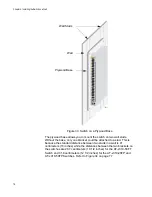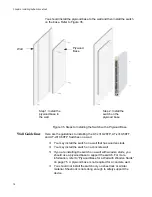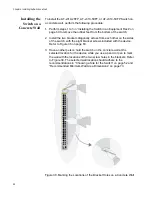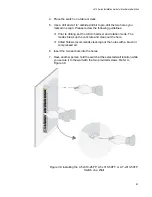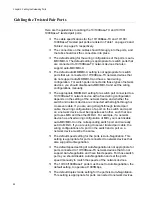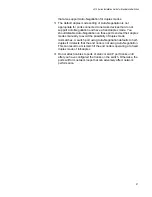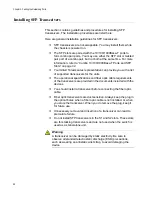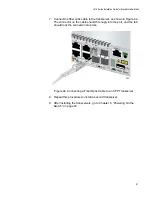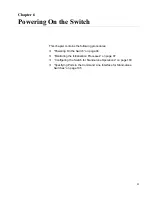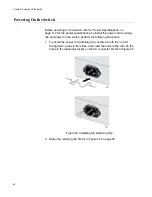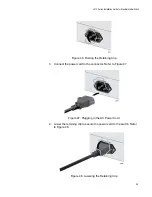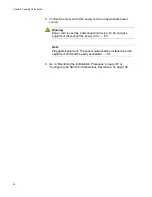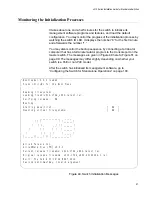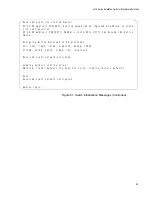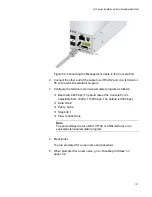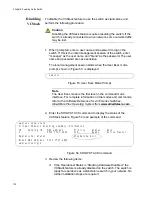
Chapter 5: Cabling the Networking Ports
88
Installing SFP Transceivers
This section contains guidelines and procedures for installing SFP
transceivers. The installation procedures are listed here:
Here are general installation guidelines for SFP transceivers:
SFP transceivers are hot-swappable. You may install them while
the chassis is powered on.
The SFP slots are paired with the 10/100/1000Base-T ports to
form combo pair ports. You may use either the SFP slot or twisted
pair port of a combo pair, but not both at the same time. For more
information, refer to “Combo 10/100/1000Base-T Ports and SFP
Slots” on page 32.
Your Allied Telesis sales representative can provide you with a list
of supported transceivers for the units.
The operational specifications and fiber optic cable requirements
of the transceivers are provided in the documents included with the
devices.
You should install a transceiver before connecting the fiber optic
cable.
Fiber optic transceivers are dust sensitive. Always keep the plug in
the optical bores when a fiber optic cable is not installed, or when
you store the transceiver. When you do remove the plug, keep it
for future use.
Unnecessary removal and insertion of a transceiver can lead to
premature failure.
Do not install SFP transceivers in the S1 and S2 slots. These slots
are for stacking transceivers and are not used when the switch is
used as a stand-alone unit.
Warning
A transceiver can be damaged by static electricity. Be sure to
observe all standard electrostatic discharge (ESD) precautions,
such as wearing an antistatic wrist strap, to avoid damaging the
device.
Summary of Contents for AT-x310-26FP
Page 10: ...Tables 10 ...
Page 14: ...Preface 14 ...
Page 46: ...Chapter 1 Overview 46 ...
Page 56: ...Chapter 2 Beginning the Installation 56 ...
Page 92: ...Chapter 5 Cabling the Networking Ports 92 ...



